History of Witchcraft in Edinburgh Tour
During the sixteenth and seventeenth centuries Scotland went through a series of changes which fuelled the Scottish witch hunt. The state became stronger and more able to interfere with ordinary people’s lives. The church went through a shake-up in religious belief called the Reformation and became much more interested in what ordinary people did and believed. Things they worried about included sabbath breaking (having fun or working on a Sunday), sex outside of marriage, quarrelling (flyting), whether people practised the ‘right’ religion in the right way or not, and the issue which interests us – witchcraft. They thought all of these things were sins. The state worried about these things too – because they feared that if all these sins were allowed to go unpunished, then God would become angry with Scotland and smite its people with plagues, famines and wars. Prosecuting witchcraft was part of this big picture of church and state becoming more ‘godly’ and working together to fight sin and to stop the consequences of sin.
However, unlike most of the church’s other preoccupations, witchcraft became a secular capital crime as well as a sin in 1563 by an act of the Scottish parliament. So, church and state collaborated to pursue witches. This led to the persecution of upwards of 4000 people in Scotland, in what we now recognize as the Scottish witch-hunts. Of these people accused as witches, it is estimated that around 2,500 were executed. Around 85% of those executed were women, and even men were not safe from suspicion, accusation, and condemnation.
It is this dark chapter of Scotland’s past that this tour will focus on. The Scottish witch trials help to inform us about various aspects of the past, including the history of crime, law, society, and religion. They raise questions as to what Scottish people believed about magic, malice, and misfortune in their everyday lives. And what are the legacies of these trials and executions today?
This tour will take you through some of the sites in Edinburgh that are associated with witchcraft trials. Each stop will take you through a different aspect of this difficult part of Scotland’s story and inform you of the role that Edinburgh itself played.
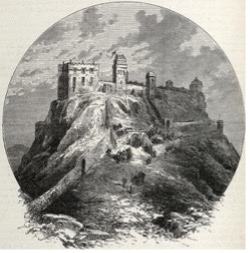 | Edinburgh Castle King James VI of Scotland (reigned 1567-1625) was born in Edinburgh Castle on 19 June 1566. James was an important figure in Scottish witchcraft, particularly during the infamous North Berwick witch trials between 1590 and 1592. More… |
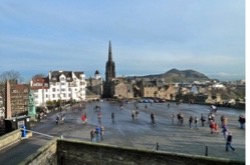 | Castle Esplanade The open ground between Edinburgh Castle and the built-up area was Edinburgh’s main execution site. It is now called the Esplanade but was then known as ‘Castle Hill’. Castle Hill was the most prominent execution site for accused witches in Scotland. More… |
 | The Witches’ Well The Witches’ Well is a monument to accused witches burned at the stake in Edinburgh. It is attached to a wall at the lower end of the Castle Esplanade. More… |
 | Upper Bow Major Thomas Weir, and his sister Jean Weir, were both executed in 1670 for crimes including incest with each other. Jean was also accused of witchcraft; this charge was later dropped, but she told an elaborate story of witchcraft and fairies. More… |
 | Cowgate Janet Boyman (d. 1572), lived in the Cowgate, and was married to William Steel. She had a visionary relationship with various spirits including the ‘good neighbours’ (fairies), and the fairy-like ‘seely wights’ (a phrase meaning ‘magical beings’). More… |
 | Greyfriars’ Kirk and the Mackenzie Masoleum The ‘Mackenzie Mausoleum’ in Greyfriars Kirkyard is the tomb of Sir George Mackenzie of Rosehaugh (c.1636-1691), a lawyer who was influential in discouraging the prosecution of witches in the 1670s. More… |
 | The Old Tolbooth The Old Tolbooth was an important municipal building for more than four hundred years. It was the location for imprisonments, interrogations, and trials of many suspected witches. More… |
 | The Heart of Midlothian The site of the Old Tolbooth is marked by a heart-shaped mosaic in the pavement outside St Giles’ Cathedral. More… |
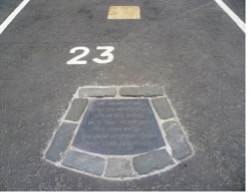 | John Knox’s Grave Protestant reformer John Knox died on 24 November 1572 and was buried in Parliament Close (now called Parliament Square). Nine years earlier, on 4 June 1563, the Scottish parliament passed the crucial act against witchcraft that made the offence a secular crime. More… |
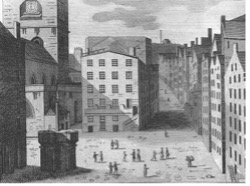 | The Mercat Cross The Mercat Cross (market cross) was the symbolic centre of urban government. A few witch-related executions took place here. More… |
 | The Tron Kirk The Tron Kirk is a former parish church in the High Street, built in the 1630s. One of its ministers was William Colville (c.1612–1675) who served at the church between 1641 and 1648. More… |
 | The High Street Euphemia MacCalzean (pronounced ‘Macall-yon’) owned property on Edinburgh’s High Street and was a victim of the so-called North Berwick witchcraft panic of 1590–92. More… |
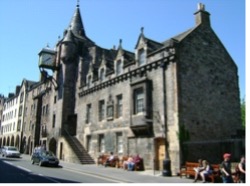 | Cannongate Tolbooth Located next to the Canongate Kirk, Canongate Tolbooth was where accused Edinburgh witches could be imprisoned and tried but sometimes notorious people from outside Edinburgh were also held here. More… |
 | Reid’s Close Sir John Nisbet, Lord Dirleton (1610–1688), was a Scottish lawyer and judge who, as Lord Advocate, led the prosecution of Thomas and Jean Weir in 1670. His Edinburgh townhouse was on the Canongate at the head of Reid’s Close, distinguished by a projecting square turret. More… |
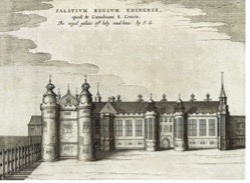 | Holyrood Palace During the North Berwick witchcraft panic of 1590-92, some of the interrogations of suspects were carried out in Holyrood Palace, the principal royal residence and also the venue for privy council meetings. More… |
 | Scottish Parliament Calls for legal pardons for witches have recently gathered pace in Scotland. In March 2022 Scotland’s First Minister at the time, Nicola Sturgeon, issued a formal apology to those executed under the Witchcraft Act. More… |
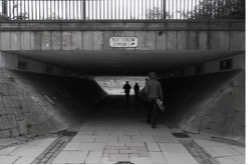 | Potterow Port Agnes Finnie was one of Edinburgh’s best-documented accused witches. She was a widow who worked as a shopkeeper and moneylender. More… |
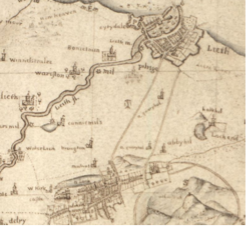 | The Gallowlee Execution Site One of Edinburgh’s execution sites, known as the Gallowlee, was on the road between Edinburgh and Leith, which in the seventeenth century were separate towns. Its in-between location was typical for execution sites, which were often on borders or boundaries. More… |
This tour is developed by Eleanor Whitehead, Ewan McAndrew, Prof. Julian Goodare, and Dr. Louise Yeoman from the University of Edinburgh. Advice from Dr. Aaron Allen is appreciated on locating early modern locations in modern day Edinburgh.
For further reference, please see the research team’s ‘The Survey of Scottish Witchcraft’ interactive resource: https://witches.hca.ed.ac.uk/.
